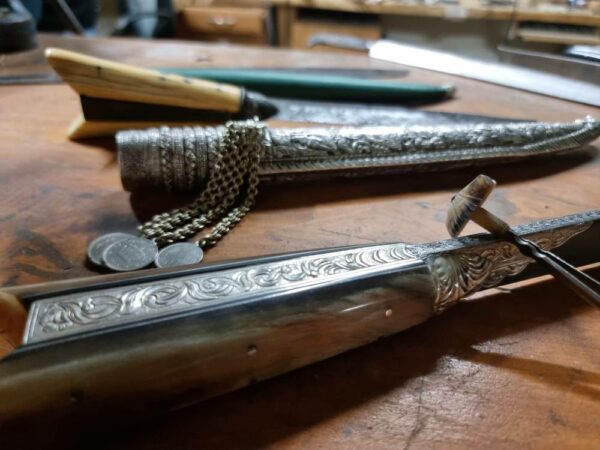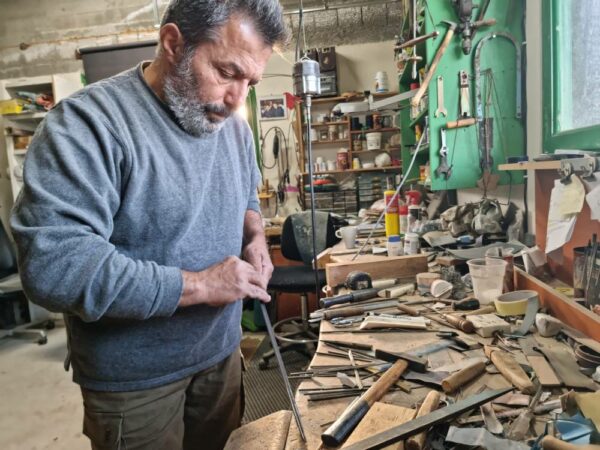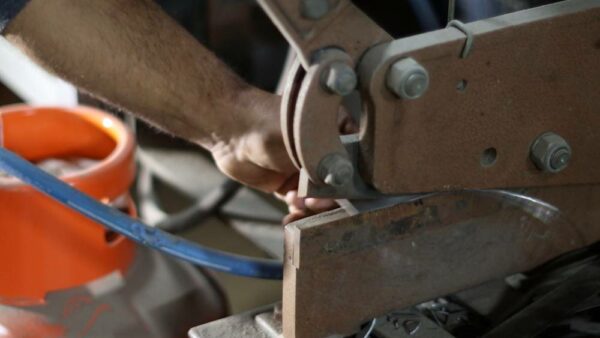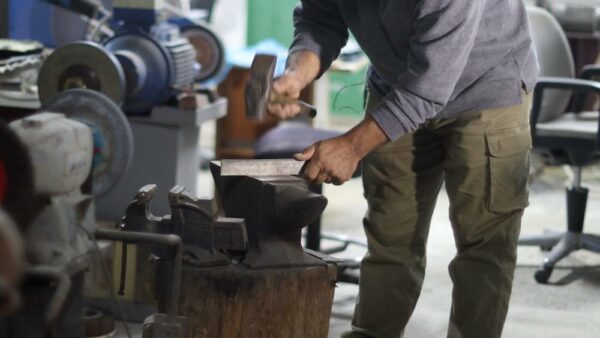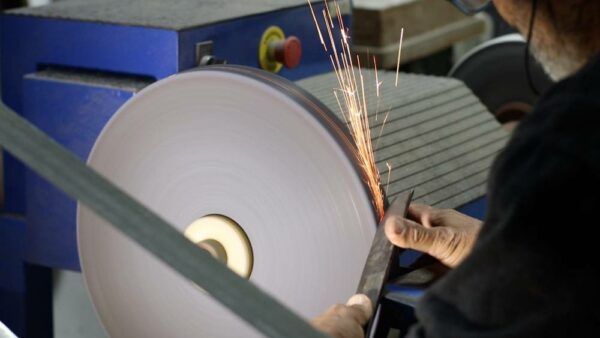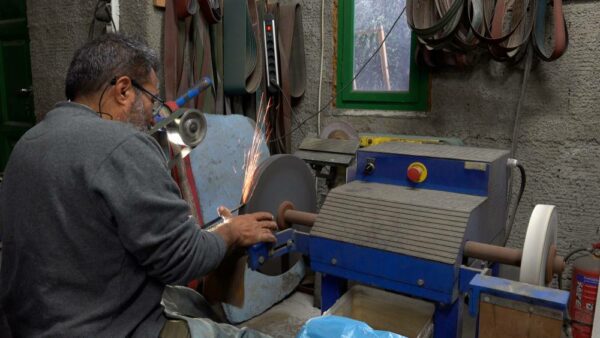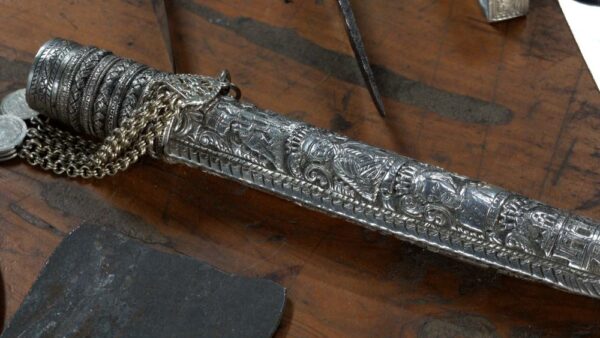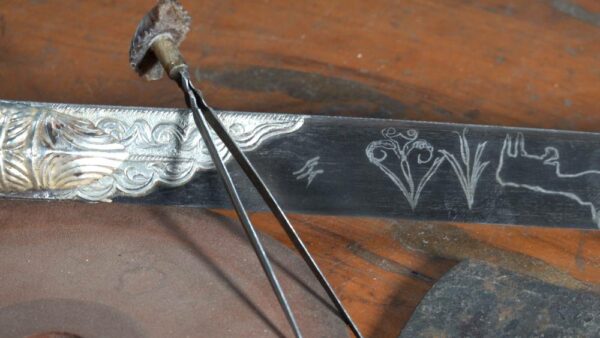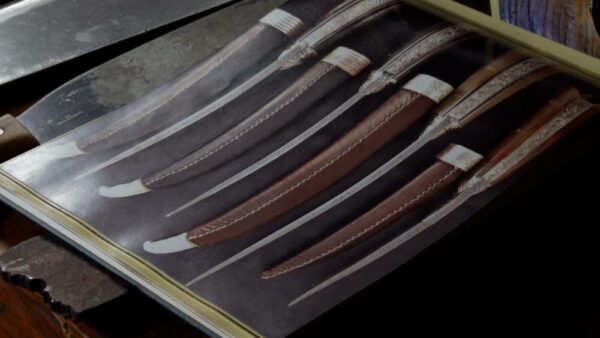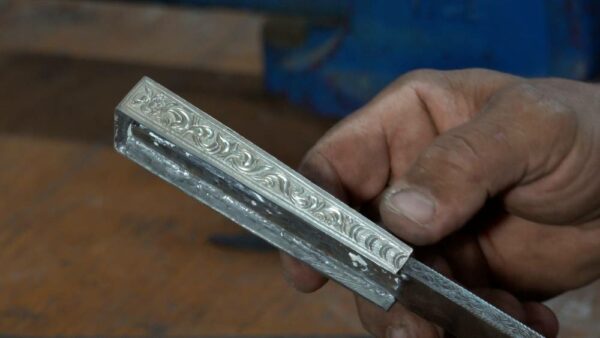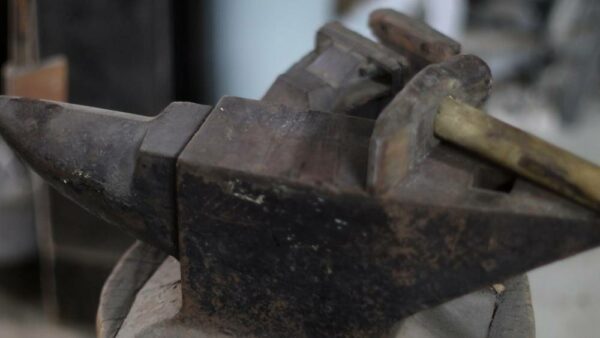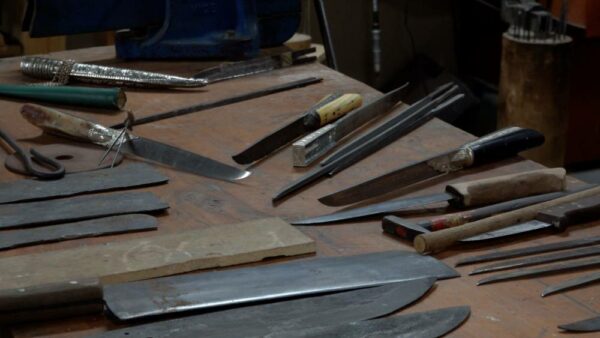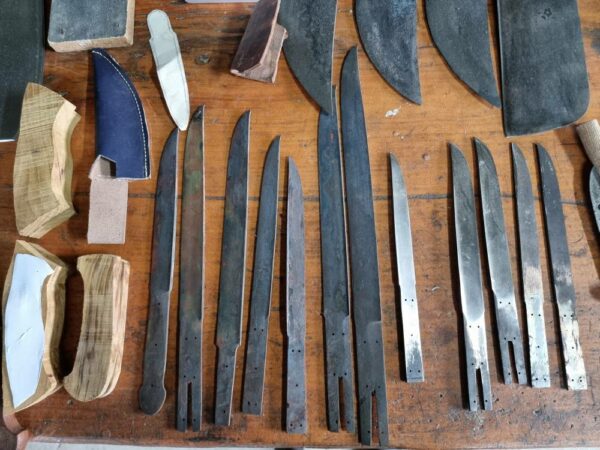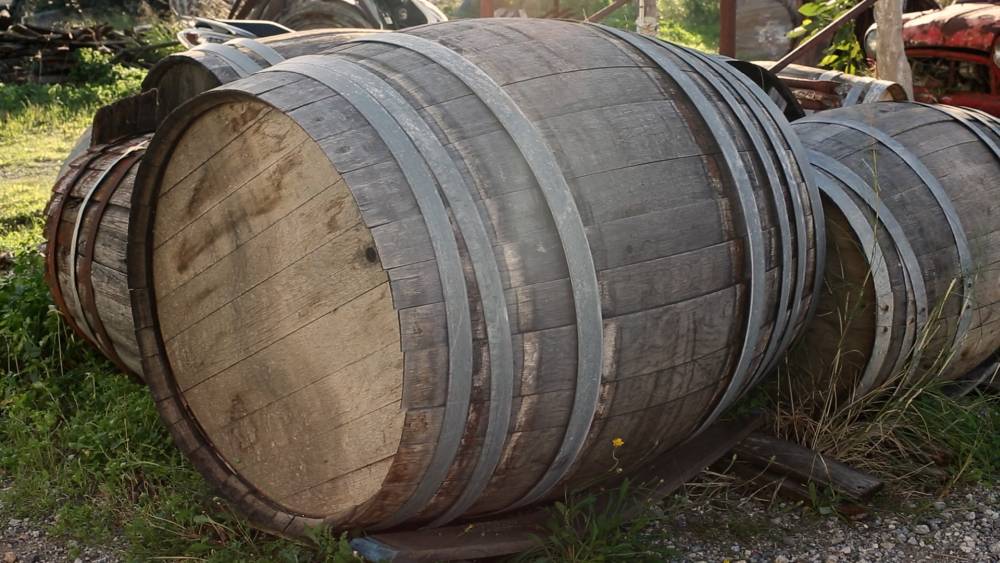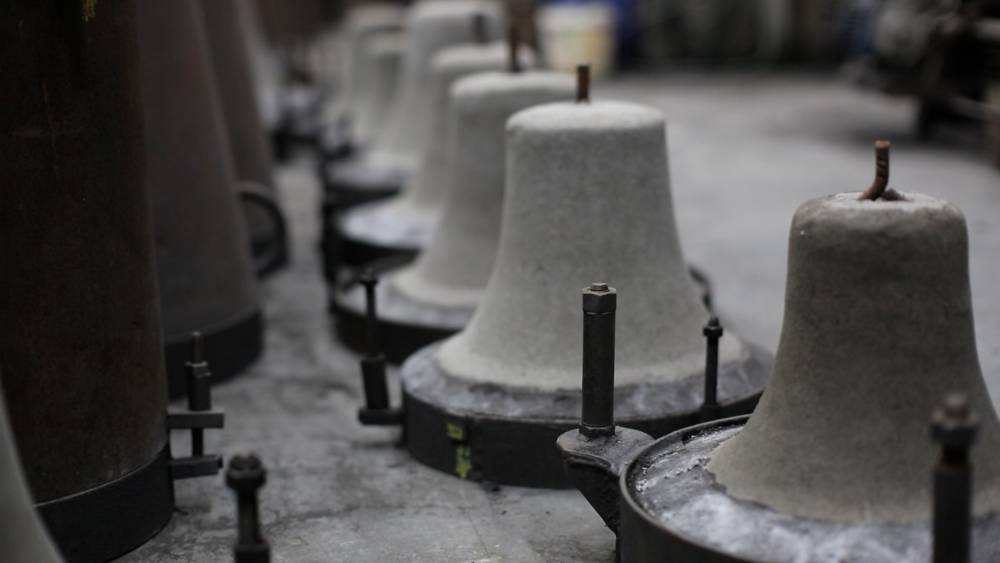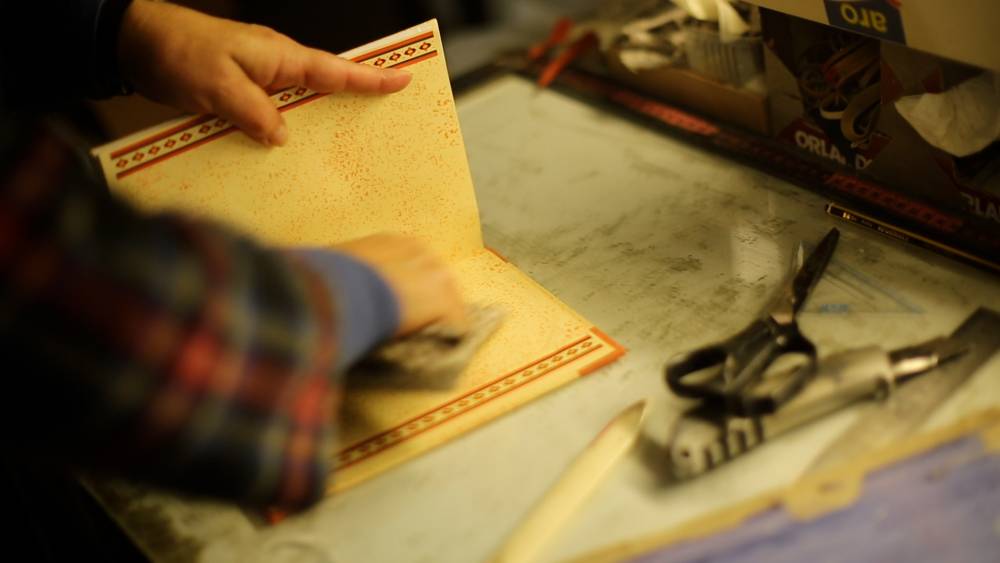Description
The Cretan knife, apart from being a useful object, has been associated with important moments in the history of Crete. In Crete, the knife making industry over time has evolved a scimitar-knife and the result of this development is what we know today as the Cretan knife.
To make a Cretan knife, the knife maker had to know many different techniques, from the shaping of the blade, the carving of the decoration, the construction of the handle as well as the scabbard. The manufacturing process starts with forging the blade in order to be strong. The handle is made of bone or horn, while in the past the craftsmen also used ivory.
At the point of connection of the handle with the blade, the method of lead-gluing and coating of, usually silver, plates is applied. The style of decorating these plates was a complex process of forging and engraving. The scabbards of expensive knives were decorated using the same procedure. The knives that men mainly possessed for their daily work had leather scabbards.
The decoration usually included figures of animals, boats and floral representations.
In Chania, on Sifaka Street, was the district of Macheradika or Bitsaktsidiko – from the Turkish word bitsak which means a kind of knife. There, there were workshops where the art of the knife flourished and still retains its old name.
The Cretan knife is accompanied by its scabbard which, depending on whether it was silver or leather, may have determined the social class of its holder. The wealthy or anyone who could afford it, ordered knives with a silver scabbard, richly and ornately decorated. A knife, as an accessory of the traditional menswear of Crete, could have a useful or symbolic character, but it was always ordered and made according to the personal taste of the customer or the fashion of the current era.

